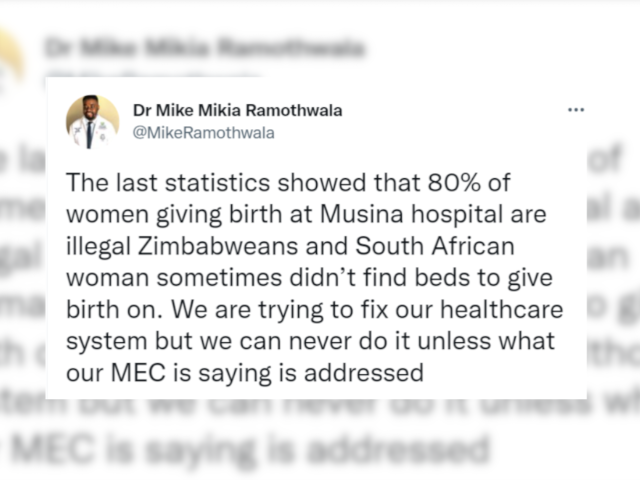This article is more than 5 years old
Kenya is grading its new system of government after the constitution created 47 new administrative units in 2010.
These counties started to govern in 2013 and are now five years old. The chairperson of the Council of Governors, Josphat Nanok, reported on their progress in his June 2018 State of Devolution Address.
We checked some of the claims he made in listing the counties’ achievements.
Kenyan law provides that no less than 15% of the revenue collected by the national government must go to the counties.
Nanok’s figure is half Kenya’s most recent budget of KSh2.56 trillion. The 47 counties receive money from the national government following approval from the Office of the Controller of Budget.
The money is split into an equitable share of the national revenue and grants. The payments are listed in the agency’s budget implementation review reports.
*Figures obtained from the 2017/2018 half-year report
SOURCE: Office of the Controller of Budget, Commission on Revenue Allocation
Nanok said the counties were working to raise their own revenues. Counties raise funds from property rates, entertainment taxes and charges for services provided. Other levies are approved by parliament.
Data from the the Office of the Controller of Budget shows that the counties’ revenue collection largely improved from 2012 to 2016. There was a dip in the 2016/17 financial year.
But the counties are yet to meet their revenue collection targets.
* 2018 half year figure. SOURCE: Budget Implementation Review Reports
Out of the 189,087 deaths Kenya provisionally registered in 2017, the three diseases accounted for 29.7%. This is according to the Economic Survey 2018.
There were 21,584 deaths from pneumonia, 17,553 from malaria and 16,953 from cancer. HIV/Aids was the fourth leading cause of death. The figures are sourced from the civil registration department, which is under the interior ministry.
But some 48% of deaths - 90,949 - were recorded as caused by “other”. Asked for more information on this, interior ministry spokesman Mwenda Njoka said: “I don’t see how we can break down ‘other’ further than ‘other’”.
Additionally, not all deaths were registered. The national statistics office estimated that only 41.9% of all deaths that occurred in 2016 were captured.
But a new study on mortality trends shows different leading causes of death in Kenya. Released in March 2018 by the health ministry, it reviewed medical records of causes of death in 168 public hospitals from 2012 to 2016.
It also recertified some of these records by looking at the medical files and not the death certificates, which may have been inaccurately filled. This is according to the head of the ministry’s civil registration and vital statistics unit, Samuel Cheburet.
“Sometimes you just see ‘pulmonary arrest’ as the cause of death. We have to find out exactly what caused it,” he said. In some instances local officials recorded causes of death based on what the families said, without evidence, he added.
Of the 252,000 deaths in this period, 102,000 were recertified. The survey listed HIV/Aids (12%), lower respiratory tract infections (9.1%) and malaria (5.7%) as the leading causes of death. It gave no further details on the types of respiratory infections. Cancer accounted for about 5.5% of deaths.
The study shows that other causes of death, apart from disease, include falls, surgical mistakes, poisoning, fire, drowning, animal bites and crime. In some cases no one really knows, so the cause is entered as “undetermined”. Together, these account for 29.1% of deaths.
The study also notes that Kenya only registers 40% to 50% of deaths. Given this and the new study data, we rate the claim as unproven.
This ratio was “necessary to deliver maternal and child health services”, Nanok added.
But the World Health Organisation has told Africa Check that it does not have a predetermined ratio for healthcare workers.
“There is no current recommendation for a predefined physician to population ratio,” Dr Mathieu Boniol, a statistician with the WHO said.
Meshack Ndolo, a senior health adviser at the council of governors, told Africa Check that the ratio had been used to show how many more doctors were needed in Kenya.
This was “because we were one of those countries that were designated as human resource for health crisis countries in 2006”, Ndolo said. He conceded that there was no prescribed ratio per se, citing WHO’s Global strategy on human resources for health: Workforce 2030.
While Kenya’s healthcare staff numbers are still short, experts have told Africa Check that the quality of healthcare is also significant.
In 2013 Kenya’s forest cover was 7.2%, and grew to 7.29% in 2017, according to the Economic Survey 2018.
But an April 2018 resource assessment report from the environment ministry shows forest cover was at 6.99% in 2013, and 7.4% in 2016. Both reports cite data from the Kenya Forest Service, the state agency tasked with protecting and managing public forests.
The discrepancy in official data is because there has not been a detailed study on forest cover, Monica Kalenda, the chief conservator of forests, told Africa Check.
The most recent study was done in 2010 and its final report released in 2013, she said. This showed forest cover was 6.99% in 2010.
“We normally do a wall-to-wall mapping which is supposed to be done after every five years, but we have not done so because of resources. It is quite expensive,” Kalenda said.
As such, forest cover is based on projections from the 2010 data, she said. (Note: A 0.1 percentage point increase would be about 58,037 hectares, larger than the Kenyan county of Migori.)
Further reading:
https://africacheck.org/reports/uhuru-kenyattas-2018-state-of-the-nation-address-fact-checked/
https://africacheck.org/reports/as-help-from-cuba-arrives-is-there-only-one-kenyan-doctor-for-every-16000-people/
These counties started to govern in 2013 and are now five years old. The chairperson of the Council of Governors, Josphat Nanok, reported on their progress in his June 2018 State of Devolution Address.
We checked some of the claims he made in listing the counties’ achievements.
Kenyan law provides that no less than 15% of the revenue collected by the national government must go to the counties.
Nanok’s figure is half Kenya’s most recent budget of KSh2.56 trillion. The 47 counties receive money from the national government following approval from the Office of the Controller of Budget.
The money is split into an equitable share of the national revenue and grants. The payments are listed in the agency’s budget implementation review reports.
| National government allocations to counties 2012-2018* | ||
| Financial year | Equitable share (in billion KSh) | Conditional grants (billion KSh) |
| 2012/13 | 9.7 | 6.7 |
| 2013/14 | 190 | 3.4 |
| 2014/15 | 226.66 | 2.6 |
| 2015/16 | 259.77 | 12.3 |
| 2016/17 | 280.3 | 19.4 |
| 2017/2018* | 302 | 23.27 |
| Total | 1,268.83 | 67.67 |
*Figures obtained from the 2017/2018 half-year report
SOURCE: Office of the Controller of Budget, Commission on Revenue Allocation
Nanok said the counties were working to raise their own revenues. Counties raise funds from property rates, entertainment taxes and charges for services provided. Other levies are approved by parliament.
Data from the the Office of the Controller of Budget shows that the counties’ revenue collection largely improved from 2012 to 2016. There was a dip in the 2016/17 financial year.
But the counties are yet to meet their revenue collection targets.
| Revenue collection by Kenya counties 2012-2018* | ||
| Financial year | Actual revenue (billion KSh) | Target (billion KSh) |
| 2012/13 | 6.8 | - |
| 2013/14 | 26.3 | 54.23 |
| 2014/15 | 33.85 | 50.38 |
| 2015/16 | 35.02 | 50.54 |
| 2016/17 | 32.52 | 57.66 |
| 2017/18* | 9.95 | 55.04 |
* 2018 half year figure. SOURCE: Budget Implementation Review Reports
Out of the 189,087 deaths Kenya provisionally registered in 2017, the three diseases accounted for 29.7%. This is according to the Economic Survey 2018.
There were 21,584 deaths from pneumonia, 17,553 from malaria and 16,953 from cancer. HIV/Aids was the fourth leading cause of death. The figures are sourced from the civil registration department, which is under the interior ministry.
But some 48% of deaths - 90,949 - were recorded as caused by “other”. Asked for more information on this, interior ministry spokesman Mwenda Njoka said: “I don’t see how we can break down ‘other’ further than ‘other’”.
Additionally, not all deaths were registered. The national statistics office estimated that only 41.9% of all deaths that occurred in 2016 were captured.
New study overturns survey data
But a new study on mortality trends shows different leading causes of death in Kenya. Released in March 2018 by the health ministry, it reviewed medical records of causes of death in 168 public hospitals from 2012 to 2016.
It also recertified some of these records by looking at the medical files and not the death certificates, which may have been inaccurately filled. This is according to the head of the ministry’s civil registration and vital statistics unit, Samuel Cheburet.
“Sometimes you just see ‘pulmonary arrest’ as the cause of death. We have to find out exactly what caused it,” he said. In some instances local officials recorded causes of death based on what the families said, without evidence, he added.
Low death registration coverage
Of the 252,000 deaths in this period, 102,000 were recertified. The survey listed HIV/Aids (12%), lower respiratory tract infections (9.1%) and malaria (5.7%) as the leading causes of death. It gave no further details on the types of respiratory infections. Cancer accounted for about 5.5% of deaths.
The study shows that other causes of death, apart from disease, include falls, surgical mistakes, poisoning, fire, drowning, animal bites and crime. In some cases no one really knows, so the cause is entered as “undetermined”. Together, these account for 29.1% of deaths.
The study also notes that Kenya only registers 40% to 50% of deaths. Given this and the new study data, we rate the claim as unproven.
This ratio was “necessary to deliver maternal and child health services”, Nanok added.
But the World Health Organisation has told Africa Check that it does not have a predetermined ratio for healthcare workers.
“There is no current recommendation for a predefined physician to population ratio,” Dr Mathieu Boniol, a statistician with the WHO said.
Meshack Ndolo, a senior health adviser at the council of governors, told Africa Check that the ratio had been used to show how many more doctors were needed in Kenya.
This was “because we were one of those countries that were designated as human resource for health crisis countries in 2006”, Ndolo said. He conceded that there was no prescribed ratio per se, citing WHO’s Global strategy on human resources for health: Workforce 2030.
While Kenya’s healthcare staff numbers are still short, experts have told Africa Check that the quality of healthcare is also significant.
In 2013 Kenya’s forest cover was 7.2%, and grew to 7.29% in 2017, according to the Economic Survey 2018.
But an April 2018 resource assessment report from the environment ministry shows forest cover was at 6.99% in 2013, and 7.4% in 2016. Both reports cite data from the Kenya Forest Service, the state agency tasked with protecting and managing public forests.
The discrepancy in official data is because there has not been a detailed study on forest cover, Monica Kalenda, the chief conservator of forests, told Africa Check.
The most recent study was done in 2010 and its final report released in 2013, she said. This showed forest cover was 6.99% in 2010.
“We normally do a wall-to-wall mapping which is supposed to be done after every five years, but we have not done so because of resources. It is quite expensive,” Kalenda said.
As such, forest cover is based on projections from the 2010 data, she said. (Note: A 0.1 percentage point increase would be about 58,037 hectares, larger than the Kenyan county of Migori.)
Further reading:
https://africacheck.org/reports/uhuru-kenyattas-2018-state-of-the-nation-address-fact-checked/
https://africacheck.org/reports/as-help-from-cuba-arrives-is-there-only-one-kenyan-doctor-for-every-16000-people/





Add new comment